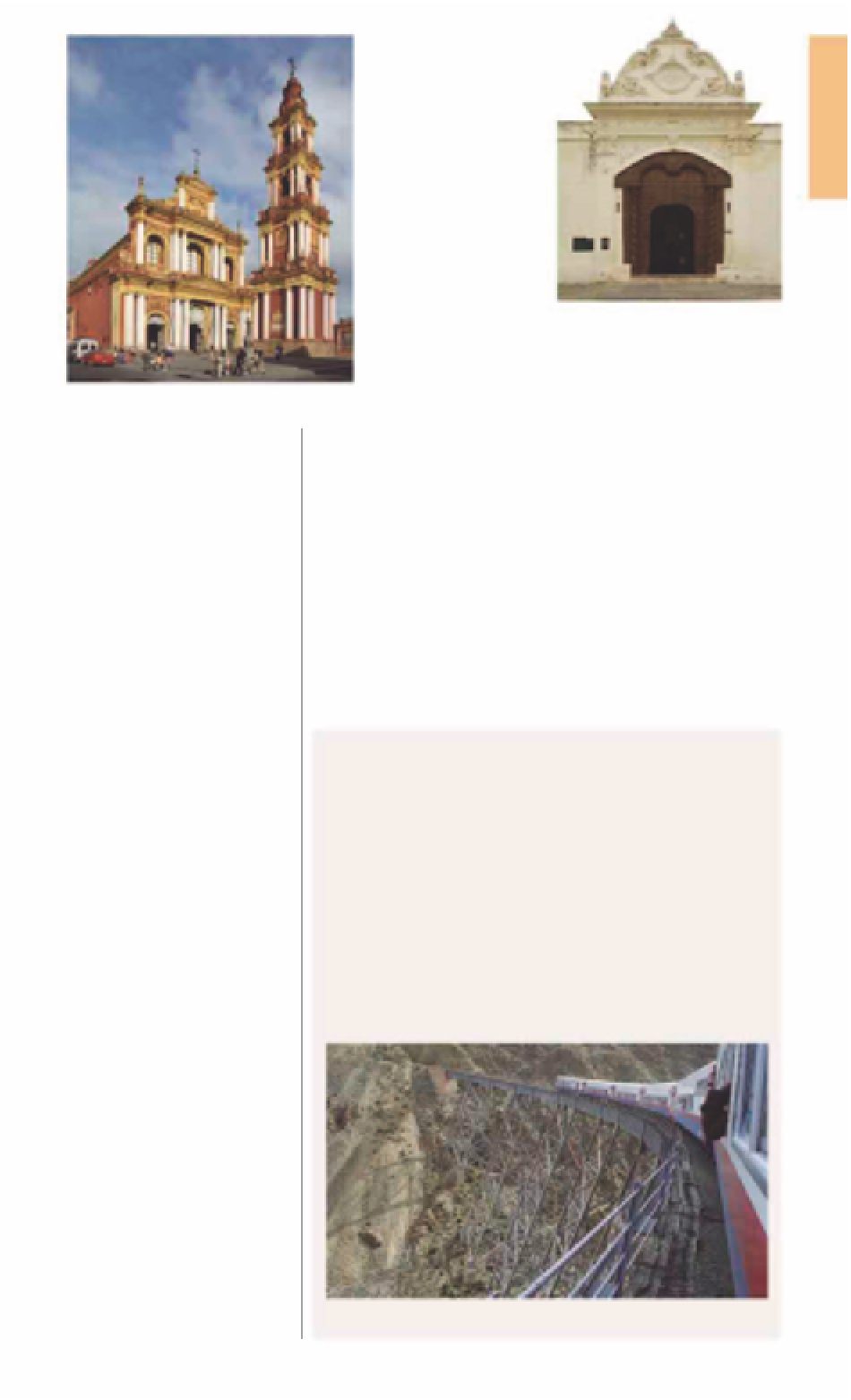Travel Reference
In-Depth Information
for a building that was
completed piecemeal
over several centuries,
the overall effect is a
pleasing one of harmony
and balance, of Latino
exuberance tempered
by Latinist rigor.
R
Iglesia y Convento
San Bernardo
Calle Caseros 73.
Te l
(0387)
431-0092.
Open
9am-noon,
4-6pm Mon-Sat, 8-10:30am
Sun.
7
5
8-10:30am Sun.
∑
saltalalinda.gov.ar
The oldest surviving
ecclesiastical complex in
Salta, Iglesia y Convento
San Bernardo is considered one
of the most beautiful religious
buildings in the country. This is
still a Carmelite nunnery and
thus closed to the public,
except for occasional matins. It
was originally intended to be a
hospital dedicated to Saint
Andrew. The earliest parts of
the building date from the late
16th century. In 1846, both the
patron saint and the function
were switched and it became
a monastery. Several
Carved rococo door at the Iglesia y
Convento San Bernardo
earthquakes and the late
19th-century enthusiasm for
“improvement” meant that the
structure has been much
altered over the centuries.
However, the dark, intricate
rococo doors that are still in
place were carved from walnut
wood by indigenous craftsmen
in 1762 and installed in 1845.
The site is still evocative: the
building is set against the
foothills of the Andean
mountains, with simple lime-
washed walls bathed in soft
light falling from lamps in
wrought-iron fittings.
The striking Iglesia y Convento San Francisco
artifacts that were buried with
the children, originally intended
to accompany them into the
next world, but now on display
to the public.
Temporary exhibitions at
the museum illuminate other
aspects of indigenous culture,
with a particular focus on pre-
Hispanic textiles and tapes-
tries - objects of primary
importance in a culture that
never developed alphabetical
writing. Other activities at the
museum include workshops
on archaeology, multimedia
storytelling sessions for kids,
and classes in Andean dance.
Train to the Clouds
Designed by US engineer Richard Fontaine Maury, this famous route
connects north Argentina with the mining regions of Chile. Although
the line was inaugurated in 1948, the train assumed its current, purely
touristic, function in the 1970s. The train leaves once a week from
General Belgrano station in Salta, taking passengers on a 280-mile
(450-km), 15-hour round trip that includes 29 bridges, 13 viaducts,
and countless breathtaking vistas and heart-stopping moments.
Salta's Tren a las Nubes (Train to the Clouds) is not a metaphorical
conceit - it is entirely descriptive. The highest and last of the viaducts,
La Polvorilla, launches into thin air at 13,850 ft (4,220 m) above sea
level and takes the train above as well as through the cloud line,
giving passengers the impression of being on some kind of
otherworldly, celestial express.
R
Iglesia y Convento San
Francisco
Calle Córdoba 15.
Te l
(0387) 431-0830.
Open
10:30am-12:30pm, 4:30-
6:30pm Tue-Fri, 10:30am-12:30pm
Sat.
8
7
5
9am & 8pm Mon-Sat,
9am, 11:30am, & 8pm Sun.
∑
saltalalinda.gov.ar
Probably Salta's best-known
landmark, this spectacular
church endures as one of the
finest examples of both Neo-
Classical and colonial architec-
ture in the country. The main
building and convent date from
the mid-18th century, while the
façade, with its Latin inscriptions
and eclectic symbols, and the
atrium are the work of Italian
architect Luigi Giorgi and were
completed in 1870. A statue of
Saint Francis, his habit flowing
and his arms folded within it,
stands in the courtyard, while
the slender tower dominates
the city's skyline. Miraculously,
Salta's Tren a las Nubes passing over Polvorilla viaduct

































